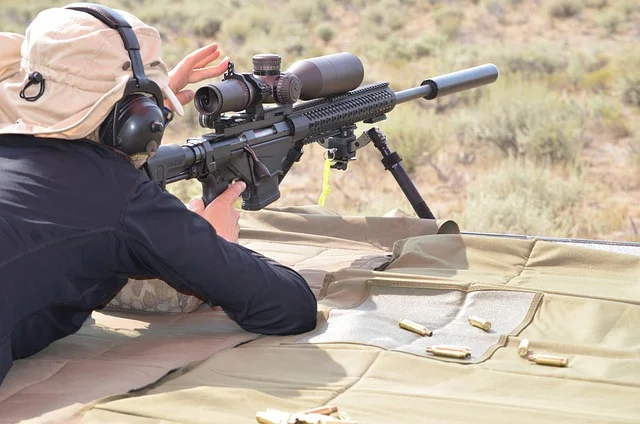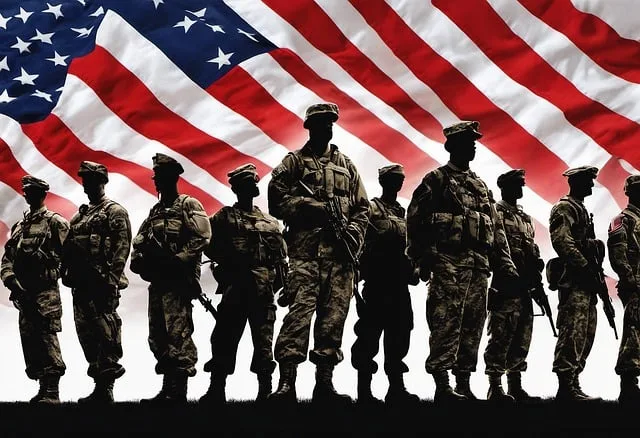How US Soldiers Use Night Vision and Thermal Imaging Technology – A Complete Guide
Introduction
In the modern era, night vision and thermal energy technology play a very important role for soldiers. This advanced equipment helps soldiers to see the effective body, even in low light or complete darkness, and to stay hidden and to locate the dangers and to complete the mission and to complete it safely, whether it is land, sky or water. This technology is useful everywhere. For soldiers who have to accomplish the biggest mission and to ensure their success, it plays a very important role in this, so today we will learn how it reduces night vision and how soldiers use it and what its importance is its importance on the battlefield. Today we will know this.
What is Night Vision Technology?
Night vision technology gives soldiers the ability to see even in the darkness. What happens with this technology is that it collects the light of the moon and the stars and makes them brighter through a special system. This light helps the soldiers to see in the darkness, and they can see their target, and it also helps them in performing their duty.
The most important part of night vision equipment is the image-intensive fire tube, which converts light into photons. This enhances all of this, and then, which is the sight that converts light into light. This technology is specially used when there is a secret operation or if there is some work to be done that has to be done secretly, but it is also important for us to be able to see that.
Types of Night Vision Devices Used by US Soldiers
The young soldiers use many different types of night vision which have different functions, and they also have different designs. The most common one is night vision goggles, which are used at night, and we do not have to hold them in our hands; They fit like our glasses, and we can avail of them without using our hands. Due to this, they will not reveal their position and can walk easily, and they can also aim, and the enemy will not be able to see them.
Night vision molecular is also an important advantage for US soldiers. It is a light thing and an advantage which can be seen with one eye and we can wear it over the helmet and we can lift it up easily. When it is not required we can lift it and when required we can put it down. Apart from this we also use night vision sometimes which is fitted on the gun and with this the soldiers can aim accurately even in the dark.
Understanding Thermal Imaging Technology
Thermal imaging is a technology that detects the heat of living creatures, so that soldiers can see, even in darkness, smoke and any other scene, even beyond obstacles. Unlike night vision, which is independent of light, this thermal imaging captures continuous radiation, meaning it creates a scene and changes its image.
This technology now uses blood sensors to measure the temperature difference between objects, such as hot objects, human bodies, or anything present there, which appears brighter than the cold ground. It is specially considered useful for search and rescue operations where normal vision is not possible.
Thermal Imaging Devices in the US Military
Young soldiers use a lot of thermal imaging equipment that increases awareness in the battlefield. Handheld thermal imager is a portable device that can be used to identify other targets. In this equipment, you can see your threat in real time. You can spot threats from a distance through thermal images.
Web mounted thermal imager on the weapon is called a ball. It helps the soldiers to take correct and accurate aim even in the dark or in bad weather. Apart from this, there is also a thermal navigation system installed there. This happens because of which the roads get damaged and dangers can be identified on the sides of the roads so that the army's convoy can move safely.
How Night Vision and Thermal Imaging Work Together
Night vision and thermal imaging are opposite to each other in a way and, together, they provide very wide visibility on the battlefield. Night vision provides good visibility even in low light, while thermal imaging detects such hot objects which cannot be seen with the naked eye.
For example, if soldiers use night vision for navigation situations at night undercover, they can detect the threat even if it is hidden, and they can remain independent on thermal scope. This gives a different level of success to the mission, and we can reduce the risk of surprise attack.
Future of Vision Technology in the US Military
In the future, night vision and to thermal imaging techniques will also change and advance and develop this technique, like multi-spectral imaging, through which we can be in the view. Now, by combining blood and thermal data, we can do work and also provide better information.
With AI, we can integrate it due to which we can identify the dangers during image analysis, and we can also decide what decision we should make at that time. Apart from this, if it is seen, then taking it with augmented reality, we can make a night vision system like We should be able to show the soldiers the data in real time so that they are able to make decisions and make improvements.
Conclusion
Night vision and thermal imaging techniques are very important advantages for US soldiers. These are advanced systems that help them to see and hide in the dark, identify threats and complete their mission safely. This technique is being developed.
his advantage is ensuring national security and making the army more powerful in modern warfare. Night vision and thermal imaging can be combined not only on the battlefield, but we can use them for other purposes as well, and we can use them for security and other purposes too. It can also be used to increase morality.
• Frequently Asked Questions ( FAQs )
How do US soldiers identify friend or foe with night vision?
They use infrared (IR) markers and specialized identification systems.
Can night vision work in total darkness?
No, it needs minimal ambient light, but IR illuminators help in total darkness.
Do thermal imaging devices work underwater?
No, thermal imaging cannot detect heat signatures underwater.
How far can US military night vision see?
Modern devices can detect targets up to 300 meters or more.
Can thermal imaging see through walls?
No, it only detects surface heat, not through solid barriers.
Why do US soldiers prefer thermal over night vision?
Thermal detects hidden targets and works in all lighting conditions.
Are night vision and thermal imaging used together?
Yes, combined use offers better visibility and target detection.
Can bright lights damage night vision devices?
Yes, intense light can degrade or permanently damage the sensors.
Do night vision goggles affect soldier’s eyesight?
Temporary strain can occur, but long-term effects are minimal.
How do US soldiers maintain night vision devices?
They perform regular cleaning, battery checks, and sensor calibration.



















If you have any doubt . Please let me know